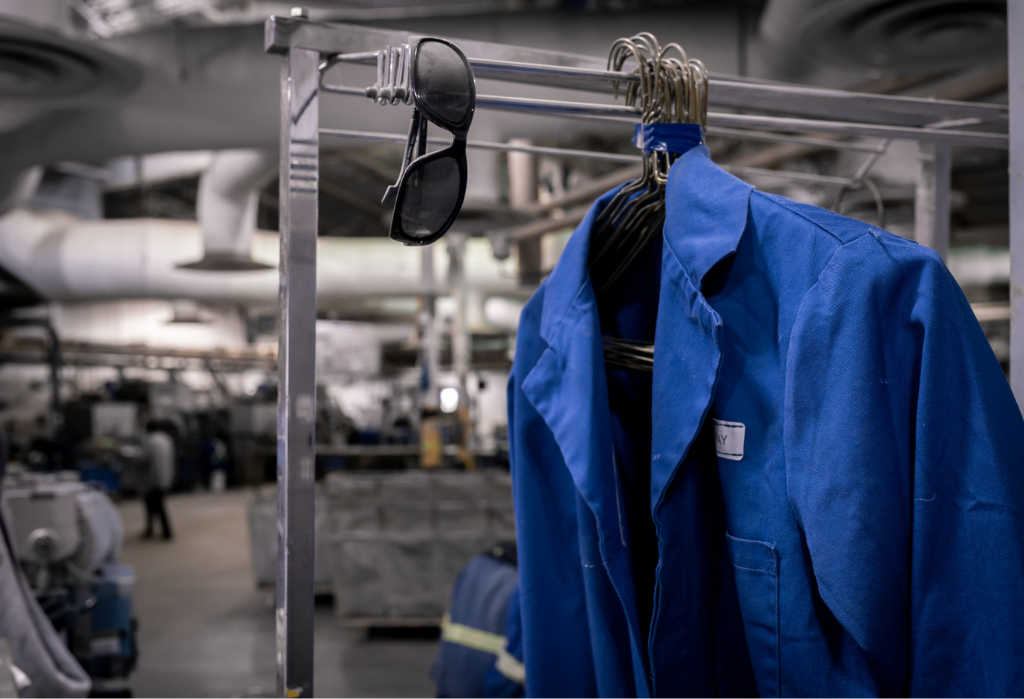
Workwear requires the same type of care and maintenance as your other clothing. This is especially true of protective gear such as flame-resistant (FR) apparel. Cleaning workwear the right way will help retain the garment’s unique characteristics and ensure the wearer’s safety. Also, given the fact that all types of workwear are usually long-term investments, it is important to do your best to protect this investment. Frequently purchasing new workwear can make a significant dent in the organization’s budget. In addition, frequent disposal of old garments can end up damaging the environment. From the frequency of washing workwear to the products used in cleaning and drying, there are quite a few things to keep in mind when cleaning workwear. Here are the top five laundry tips for workwear:
Run a Check
Examine the garment before you throw it in the wash. Make sure that buttons and zippers are closed as also any Velcro strips that may be on the garment. This will help prevent them from getting damaged and decrease the wear caused to the fabric. Check pockets for loose change or any other objects that might have been left there inadvertently. Belts, braces, knee or elbow inserts, must all be separately washed. For garments with reflective properties, turn them inside out before washing. This way the reflective strips remain undamaged and will not get streaked either. Lastly, workwear must be washed with similarly soiled apparel.

Use Appropriate Products
When cleaning workwear, it is essential to choose the right type of detergent. If it’s too harsh, then it can cause discoloration of the fabric and thus, lead to a decline in quality. Similarly bleach can weaken the fibers and cause damage to workwear, especially those with fire retardant properties. This can prove dangerous, especially when chlorine or hydrogen peroxide is used on protective workwear. Starches, fabric softeners, and hard water can also have an adverse impact on the quality of the fabric.
Get the Temperature Right
Workwear garments must be washed at the right temperature to rid them of all residue and stains. Dirt, oil, and mud stains must be cleaned immediately as failure to do so can make it extremely difficult to remove them later. Also, if chemicals and hydrocarbons are not fully eliminated, it can prove risky to the wearer while out on a job. Ensuring the right temperature is also necessary to prevent the garment from shrinking or becoming loose. Inappropriate wash temperature can have an adverse impact on the garment’s FR and reflective properties.
Dry it Properly
After washing workwear the right way, it needs to be dried the right way too! This assumes special significance in the case of FR garments. Improper drying techniques can cause the garment to lose its shape or shrink. This can instantly render the FR properties ineffective. Use of too much heat is just as bad as use of too little heat! Thus, it is essential to get the balance just right.
Follow Manufacturer Guidelines
There are different types of workwear and each serves a different purpose. Also, they are likely to be used by workers in different sectors such as construction, oil and gas, and road work to name a few. Each of these garments will possess unique characteristics specific to the industry they are used in. Thus, the suggested maintenance for each will also vary accordingly. Abiding by manufacturer guidelines is the best way of ensuring the longevity and safety quotient of your workwear. In most cases, a small label sewn into the inner lining of the garment will have the instructions.

When it comes to organizations with more than a handful of employees, choosing a professional industrial cleaning service such as Goodfish is the best way of ensuring that workwear is laundered the right way without any hassle. Goodfish industrial dry cleaning and wet wash services are suitable for all kinds of companies that require employees to use protective workwear. With specific laundering facilities even for flame-resistant coveralls and impact gloves that are at risk of oil staining, our customized cleaning can come in handy. It is likely that you have come across a large number of techniques and products that claim to be effective in workwear cleaning. However, it is essential to remember that you are dealing with apparel that ensures the safety of employees at the job site. This requires a professional touch and the absence of it during the cleaning process can compromise the quality of the fabric.



 Your privacy is important to us, and we are committed to protecting your personal information.
Your privacy is important to us, and we are committed to protecting your personal information.